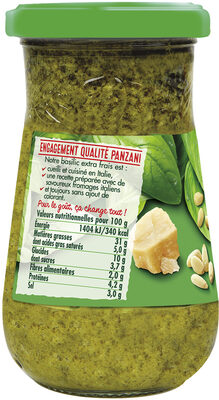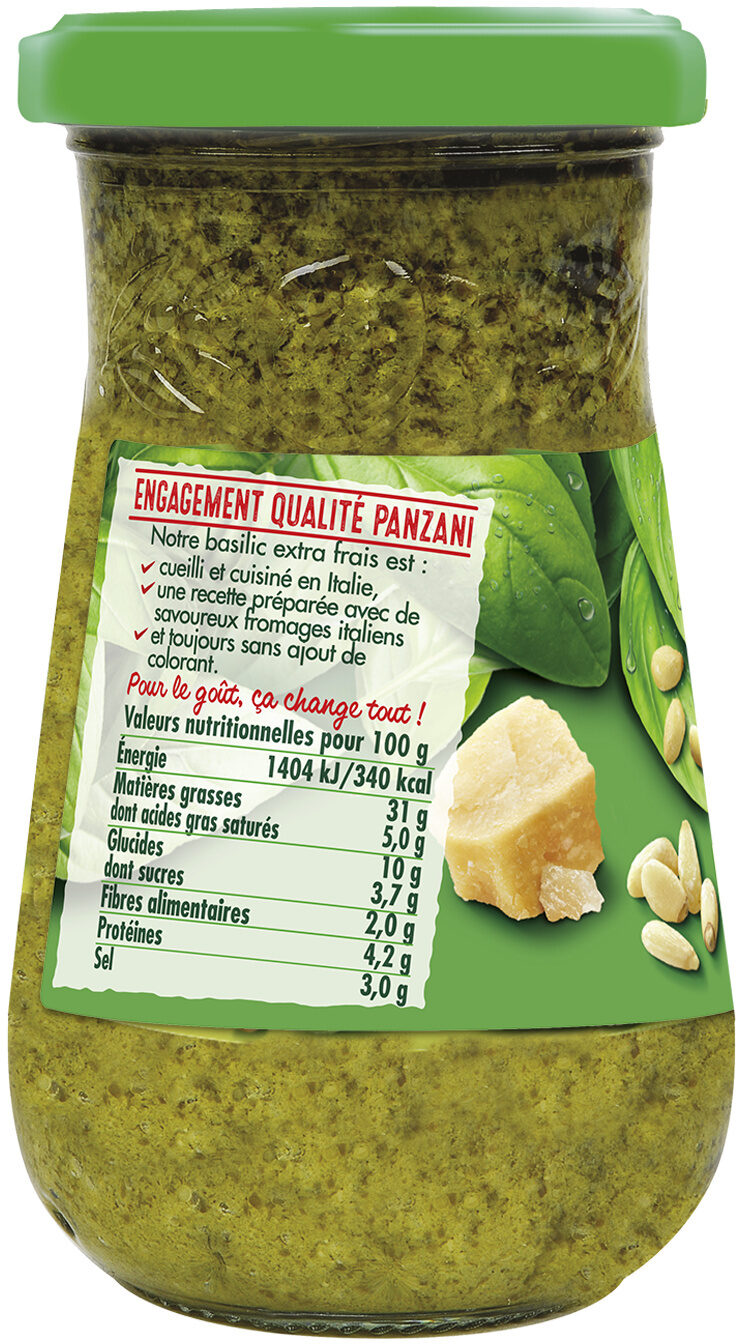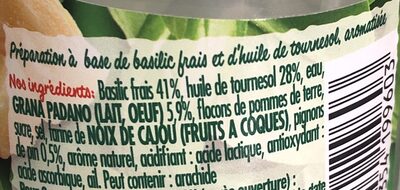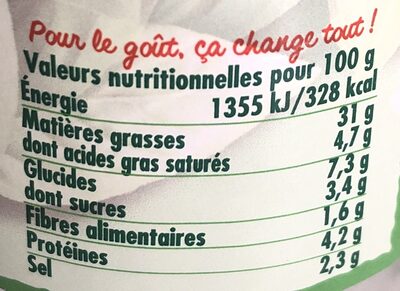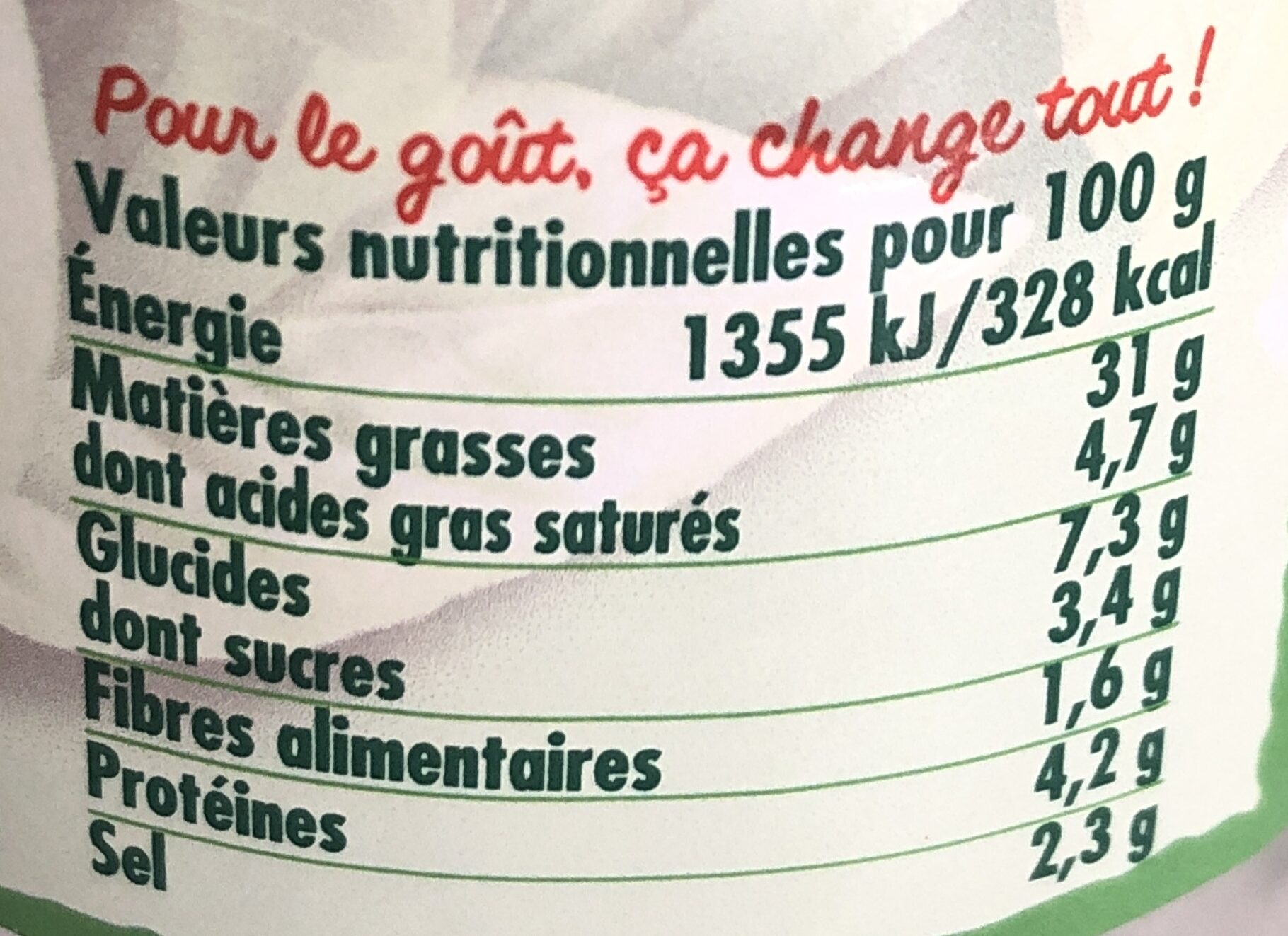Pesto Basilic extra frais - Panzani - 200 g
Some of the data for this product has been provided directly by the manufacturer PANZANI SA.
Barcode: 3038354199603 (EAN / EAN-13)
Common name: Panzani Sos Pesto Basillico cu branzeturi italiene -200g
Quantity: 200 g
Packaging: Glass, Jar, fr:Couvercle en métal
Brands: Panzani
Categories: Plant-based foods and beverages, Plant-based foods, Condiments, Culinary plants, Aromatic plants, Herbs, Sauces, Pasta sauces, Pestos, Basil, Green pestos, fr:Pesto Vert, fr:Pâtes au pesto
Labels, certifications, awards:
Contains milk, Green Dot, Made in Italy, No colorings, Nutriscore, Nutriscore Grade C, Nutriscore Grade D, With Sunflower oil, Triman, fr:A-l-huile-d-olive, fr:Produit-en-italie

Origin of ingredients: Italy
Manufacturing or processing places: Italie
Traceability code: LA219
Link to the product page on the official site of the producer: https://www.panzani.fr/nos-produits/nos-...
Stores: Leclerc, Carrefour, carrefour.fr, Carrefour Market
Countries where sold: France, Romania, Switzerland
Matching with your preferences
Other information
Preparation: Ne réchauffez pas votre Pesto avant dégustation, les pâtes s'en chargeront !
Conservation conditions: CONSERVATION (après ouverture) : 8 jours au réfrigérateur.
Customer service: Service consommateurs PANZANI - Laura DUVAL, 37 bis, rue Saint Romain 69008 LYON
Report a problem
Data sources
The manufacturer PANZANI SA uses Equadis to automatically transmit data and photos for its products.
Product added on by elia
Last edit of product page on by danizavtz.
Product page also edited by andreea, anthony3, antonia33, chachakpz, charlesnepote, cinolito, cocoo-rng, cyberkiosc, date-limite-app, driveoff, ecoscore-impact-estimator, feat, foodvisor, fviti, gala-nafikova, inf, kiliweb, levox-brintel, lubos, manu1400, miles67off, minouche1983, mrhalal, openfoodfacts-contributors, org-panzani-sa, packbot, quechoisir, roboto-app, rock07, s25t82, scanbot, segundo, smoothie-app, tacinte, tacite, teolemon, tombout, yuka.US84L0hJRlIvc0VNcWZReHBoSE01TmQ0MXNHblFEdnNLTlVMSWc9PQ, yuka.WllFZEFZQlFtL3RWbDlnVC95alYzZkZObnFlcmVHK0pkOWdUSVE9PQ, yuka.YUowRkw1b3MvK0EzZ3NRTTJpSEZ3dFJzbDdXcEFVQ29LZm9CSVE9PQ, yuka.ZVA0K1NvNVJ2T0FQcXN3Zyt4clovdlFwNjRHR0JXeUlJc1pLSUE9PQ.
